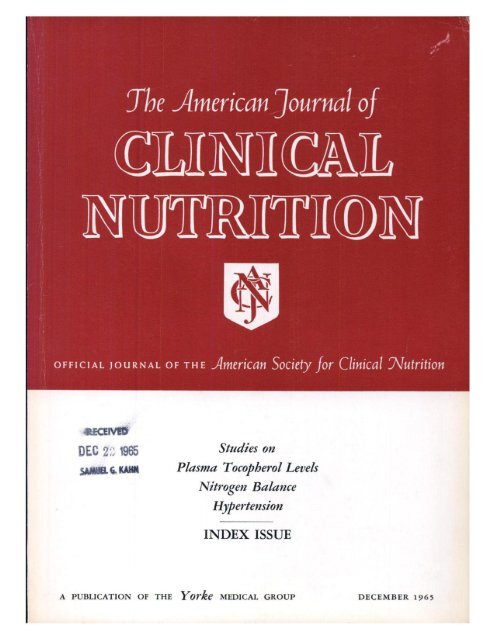食品指南针评分-10:利用配料表信息评估食品和饮料健康性的方法验证。
IF 6.5
1区 医学
Q1 NUTRITION & DIETETICS
引用次数: 0
摘要
背景:食品指南针 "是一种新颖的食品分析系统,它利用 9 个领域的 54 个属性对食品、饮料和膳食的健康性进行全面、有效的评估。然而,其中一些属性的信息并不常见:我们旨在开发并验证一种方法,即食品指南针得分-10(FCS-10),利用包装标签上常见的信息来估算食品指南针得分:缺失属性的计算方法是对每种产品的成分进行加权评分,这些成分来自于一个包含 10,000 ∼ 10,000 种食品和饮料的数据集。最终的 FCS-10 分值从 1(最不健康)到 10(最健康)不等。作为验证研究的一部分,我们进行了诊断准确性分析,以评估 FCS-10 与原始评分相比的表现。通过比较FCS-10推荐分类与FCS推荐分类(≥7分为鼓励食用的食物,4-6分为适量食用的食物,≤3分为限制食用的食物),计算了灵敏度、特异性、阳性预测值(PPV)和阴性预测值(NPV):89%的产品(样本数=481)的 FCS-10 分值与原始分值相差不超过 1 个单位(为便于比较,将 1-10 分值重新调整为 1-10);无一偏差超过 2 个单位。FCS-10 和原始评分之间的相关性很高(r=0.93)。FCS-10 在识别应鼓励、适度或限制的产品方面也表现良好,总体灵敏度和特异度分别为 87% 和 93%:结论:FCS-10 提供了一种实用的方法,可利用现成的标签数据评估各种包装食品和饮料的健康性,同时保持了原始系统的优点。本文章由计算机程序翻译,如有差异,请以英文原文为准。
Food Compass Score-10: validation of a method for evaluating the healthfulness of foods and beverages using ingredient list information
Background
The Food Compass, a novel food profiling system, provides a holistic, validated assessment of the healthfulness of foods, beverages, and meals using 54 attributes across 9 domains. However, information on several of these attributes is not commonly available.
Objectives
We aimed to develop and validate an approach, Food Compass Score-10 (FCS-10), to estimate FCSs using information commonly available on package labels.
Methods
Missing attributes were calculated using weighted scores of each product’s ingredients, derived from a dataset of ∼10,000 foods and beverages. The final FCS-10 was scaled from 1 (least healthful) to 10 (most healthful). As part of this validation study, diagnostic accuracy analysis was conducted to evaluate the performance of the FCS-10 compared with the original score. Sensitivity, specificity, positive predictive value, and negative predictive value were calculated by comparing the FCS-10 recommendation categorizations with the FCS recommendation categorizations (≥7 for foods to encourage, 4–6 for foods to consume in moderation, ≤3 for foods to limit).
Results
FCS-10 produced scores within 1 unit of the original score (when rescaled 1–10 for comparison) for 89% of products (n = 481/538); none deviated >2 units. The correlation between FCS-10 and the original score was high (r = 0.93). FCS-10 also performed well in identifying products to encourage, moderate, or limit, with overall sensitivity and specificity of 87% and 93%, respectively.
Conclusions
FCS-10 offers a practical approach for estimating the healthfulness of diverse packaged foods and beverages using readily available label data while maintaining the strengths of the original system.
求助全文
通过发布文献求助,成功后即可免费获取论文全文。
去求助
来源期刊
CiteScore
12.40
自引率
4.20%
发文量
332
审稿时长
38 days
期刊介绍:
American Journal of Clinical Nutrition is recognized as the most highly rated peer-reviewed, primary research journal in nutrition and dietetics.It focuses on publishing the latest research on various topics in nutrition, including but not limited to obesity, vitamins and minerals, nutrition and disease, and energy metabolism.
Purpose:
The purpose of AJCN is to:
Publish original research studies relevant to human and clinical nutrition.
Consider well-controlled clinical studies describing scientific mechanisms, efficacy, and safety of dietary interventions in the context of disease prevention or health benefits.
Encourage public health and epidemiologic studies relevant to human nutrition.
Promote innovative investigations of nutritional questions employing epigenetic, genomic, proteomic, and metabolomic approaches.
Include solicited editorials, book reviews, solicited or unsolicited review articles, invited controversy position papers, and letters to the Editor related to prior AJCN articles.
Peer Review Process:
All submitted material with scientific content undergoes peer review by the Editors or their designees before acceptance for publication.

 求助内容:
求助内容: 应助结果提醒方式:
应助结果提醒方式:


